Engine Diagnostics, Troubles and Tune-up
Diagnostics requires an understanding of the fundamentals and a systematic approach to determine what the problem is. When conditions indicate that the problem may be in the engine itself, the engine must be tested. If the engine has a problem, the other systems cannot function properly or compensate for the fault in the engine. The other systems are responsible for the delivery of the fuel, air, and electricity to the engine. The engine is responsible for sealing the cylinders, compressing the mixture, and conversion of the energy produced in the cylin ders into the power necessary for the movement of the vehicle. The engine also produces the signals for precise operation of the other systems.
Four primary tests are conducted to determine the condition of the engine and its parts. The cylinder compression test measures the amount of pressure produced by the piston moving up the cylinder during the compression stroke. The cylinder leakage test measures how well the cylinder is sealed when the valves are closed. The cylinder power balance test compares the amount of power produced by each cylinder when the engine is running. The engine oil pressure test measures the pressure at which the oil circulates in the engine. This test can be performed when the trouble indicates that insufficient or excessive oil pressure is causing the problem. In addition to the above tests, the engine vacuum test can be conducted to define the problem and decide what test should follow to identify the problem. The vacuum test is a quick but precise way to start engine diagnostics. However, technician may start with visual inspection and listening for certain under-the-hood noises. The chapter discusses all these procedures towards diagnostics of any engine. The common troubles of the engine and the tune-up procedures are also presented in the chapter.
19.1.
Under-the-hood Noises
One of the most difficult problems for the technician is locating abnormal noises coming from the interior of the engine. It is also very difficult to describe noises through words. The following descriptions are intended to serve as general guidelines. Experience has to be built up over the years to become an expert in the field.
Crankshaft Noises.
Noises due to excessive main bearing clearance are generally dull, heavy metallic knocks. The frequency of knock rises with the increase in the speed and load on the engine. Main bearing
knocks (due to excessive clearance) generally are not noticeable even at an idle speed.
Excessive crankshaft end play causes a sharp rap to occur at irregular intervals. The noise is noticeable at idling speed.
A loose flywheel or broken flex-plate (Fig. 19.1) can usually be detected by the following procedure. The noise produced while the engine running is similar to a connecting rod knock.
(i) Advance the engine idle to 2000 rpm.

Fig. 19.1. Broken automatic transmission flex-plate.

Fig. 19.2. Ford crankshaft vibration damper (harmonic balancer) became separated.
(ii) Turn off the ignition switch.
(Hi) When the engine has almost stopped, turn the switch on again.
(iv) Repeat this procedure several times.
(v) If the flywheel is loose or the flex-plate is broken, a distinct knock is heard every time the ignition switch is turned on.
The crankshaft vibration damper (harmonic balancer) assembly can become separated (Fig. 19.2). This generally produces a heavy rattling noise that can be heard at low speed. Sometimes a crankshaft breaks off at the snout or at one of the front bearing journals (Fig. 19.3). A heavy knocking rattling sound is then heard while the engine is running.
Connecting Rod Noises.
The noises due to excessive connecting-rod bearing clearance are usually a light rap or clatter. The noise becomes louder with increasing in engine speed. By grounding out the spark plugs, one at a time, one can identify the cylinder from which the noise is coming. The noise may not be eliminated entirely by grounding, but its intensity is reduced considerably.
Piston Noises.
The most common piston noise is slap. This is a hollow, muffled, bell-like sound produced due to rocking of the piston from side to side in the cylinder. The piston rocking condition arises when cylinder wall clearance becomes excessive or when a piston skirt breaks (Fig. 19.4). Piston slap is loudest when the engine is cold, and the noise lessens or disappears after the engine is warm.

Fig. 19.3. Broken crankshaft piece.
To detect piston slap, following procedure may be adopted. (i) Pour several cubic centimeter of 40-weight engine oil into the suspected cylinders. (ii) Crank the engine for several revolutions with the ignition turned off. This causes the oil to flow down past the piston rings and act as a cushion. (Hi) Install the spark plug(s)
and start the engine. (iv) If the noise is eliminated, the engine has a piston slap condition.
Piston Pin Noise.
Piston pin noise is usually due to excessive pin clearance. This causes a sharp, metallic, double-knock sound most prominent when the engine is idling. To test for excessive piston pin clearance noise, the following procedure may be used :
(i) Run the engine at idle speed.
(ii) Short out spark plugs, one at a time. The double-knock sound becomes more audible
at the cylinder with the loose pin.
Valve Train Noise.
Valve train noise produces a characteristic “clicking” sound. The frequency of valve train noise is at one-half crankshaft speed. A very common valve train noise is lifter clicking. If the engine is fitted with solid lifters, an adjustment may be necessary. But if the engine is equipped with hydraulic lifters, several things may go wrong (Fig. 19.5).
Hydraulic Valve Lifter Noise. An important point, which should not go unnoticed, is that several conditions produce a noise identical to that caused by an inoperative lifter. Some of these conditions include,
(i) Lack of lubrication between the rocker arm and the push rod.
(ii) Lack of lubrication between the rocker arm and the end of the valve stem.
(Hi) Excessive valve guide-to-valve stem clearance.
(iv) Badly worn valve tips and/or rocker arm pads.
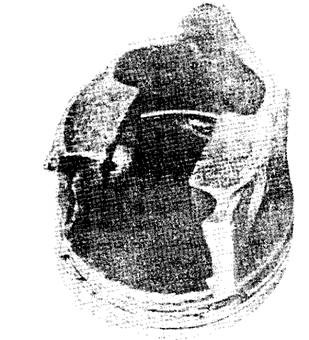
Fig. 19.4. Broken skirt on the piston, which produces severe slap noise.
(v) A bent valve seat. (Fig. 19.6)
(vi) A bent valve (Fig. 19.7).
(vii) Worn cam lobes (Fig. 19.8).
(viii) A broken valve spring.
(ix) A loose rocker arm shaft.
(x) A burned-out PCV spacer underneath the carburettor.
If it is confirmed that the noise is not caused by one of the above factors and is definitely caused by a hydraulic valve lifter, then isolate the inoperative lifter. A simple way is to use a one metre long piece of heater hose. Hold one end of the hose near the spring retainer of each valve, and the other end of the hose near the ear. Then it is very easy to locate the noisy lifter(s).
Basically, an inoperative lifter produces four types of noise.
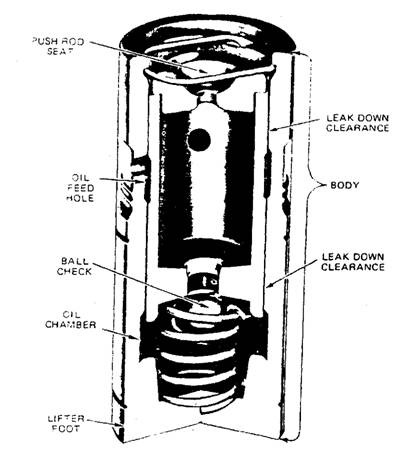
Fig. 19.5. Construction of a typical hydraulic valve lifter.
(a) Loud Rapping Noise.
This can be caused when the plunger is “frozen” in the body, which is usually due to excessive varnish between the plunger and body, or by foreign body, or by foreign mater wedged between the plunger and body.
(b) Moderate Clicking Noise. As was the case with the loud rapping noise, moderate clicking can also be caused by varnish or a worn lifter bottom. Two other causes of moderate clicking noise are fast or slow leak-down.
(c) Intermittent Clicking Noise. This type of noise is difficult to locate because it produces only a few clicks, and then disappears and reappears after a short period of time. The usual cause of intermittent clicking is a minute piece of dirt that holds the ball check off the seat for a few seconds and then passes through.
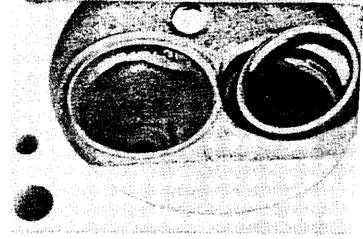
Fig. 19.6. Badly worn lobes.
(d) General Noise throughout the Valve Train. When the noise is throughout the entire valve train, the cause is usually found in the oil or the oil supply. Too much oil in the crankcase causes foaming and aeration. Not enough oil in the crankcase, an oil pump not operating correctly, or clogged main oil gallery lines can also cause general valve train noise.
Other Under-hood Noises.
Some other under-hood noises generally encountered are listed below.
(i) Belt “squish” or “squeal”.
(ii) Manifold heat control valve rattle.
(Hi) Air pump “squeak”.
(iv) Mechanical damage to the piston.
(v) Connecting-rod bolts hitting the inside of a dented oil pan.
(vi) Top of connecting-rod bolts moved out ofplace, and wedged under the valve head. This turned around and striking the produced rough idle, smoke from the tailpipe, and lifter camshaft. clicking noise.
(vii) Fuel pump attachment bolts too long and rubbing on the timing chain.
(viii) New piston rings hitting the ridge at the top of the cylinder bore.
(ix) Piston striking the edge of the head gasket.
(x) Piston pin rubbing against the cylinder wall.
(xi) Bad engine mounts.
(xii) Fuel pump rocker arm return-spring broken.
(xiii) Broken valve spring.
(xiv) Exhaust leaks.
(xv) Vibration damper rattle from sheared off keyway.
(xvi) Alternator bearing noise.
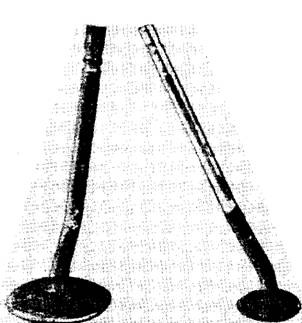
Fig. 19.7. This exhaust valve seat insert became loose,
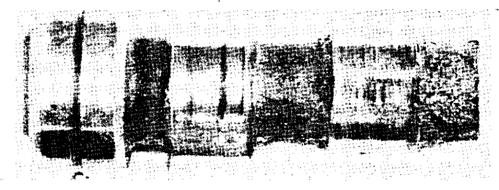
Fig. 19.8. Bent valves can cause the engine to idle very rough, shake on take-off, and make noise.
